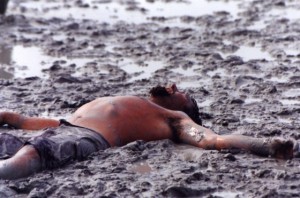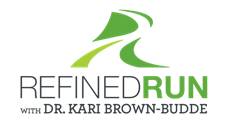The Importance of Post-Race Recovery
So, you’ve just finished your recent marathon or half marathon! Congratulations!! All of that hard work paid off and you finished. Now, on to the tough work that people love, but don’t always perform well: recovery.
The first few minutes after a race are very important for overall recovery, but the next few weeks are also instrumental to reducing your risk of injury and allowing your body to reap the benefits of that hard race and all of the training you just put in.
WHAT WE USUALLY DO IMMEDIATELY AFTER THE RACE

WHY WE NEED TO COOL DOWN AND RECOVER WELL
Your body systems return to pre-run levels very slowly
The cool down makes this return less detrimental and improves overall body function by:
Preventing dizziness and passing out (because of blood pooling in legs). This is why those annoying medical volunteers won’t let you stop and put your hands on your knees!
Reducing lactate build up (by improving blood flow and circulation).
Improving the reduction of hormones that cause elevated heart rate and breathing, which will Increase Overall Recovery.
Decreasing muscle stiffness and soreness.
And finally: the cooldown reduces your risk of injury!
WHAT WE SHOULD DO IMMEDIATELY POST-RACE
In the first 5-10+ minutes:
Fuel Replenishment:
Drink your recovery fluids, chocolate milk or any drink that has a ratio of approximately 3:1 or 4:1 carbohydrates to protein for efficient muscle repair. With your drink and/or the food that you take in, aim for 40-60 grams of carbohydrates and 15-20 grams protein. Water and electrolyte drinks are essential immediately post-race.
Some examples of quality post-race fuels:
16 ounces of chocolate milk
High protein yogurt
Trail mix of nuts, dried fruit
Bananas
Beans and rice (seriously – this was the post-race meal at a marathon in Alabama that I ran and it was amazing!)
Sports drinks with the 3:1 or 4:1 carb:protein ratio
Slow jog for 1- 3 miles and include:
Carioca / Grapevine
Side shuffles (nice and slow and easy)
Backwards jogging (yes! To open up those tight hips and regain tall posture)
Static Stretching (30-90 seconds each) – see the Common Injuries page for pictures of some of these stretches.
Calves
Hamstrings
Quads
IT Band
Hip Flexors
Glutes
Low Back
Wear compression socks. Compression socks will help to decrease blood pooling in your feet and ankles, improve circulation, decrease soreness and assist with returning to normal walking.
Ice Bath! This is probably the most difficult post-race activity for most runners to perform. I promise you, it’s not quite as bad as you think it is. Keep your shorts, shirt, sweatshirt and sometimes a hat and gloves on and fill up a bathtub or kiddie pool with cold water. Add in two bags of convenience store ice (or a few garbage cans full of ice from the hotel ice machine), then slowly sit down in the tub so that everything on your body from the hips down is covered in the ice water. You can keep your shirts on and just hold them up out of the water to make this more tolerable. Set your phone or watch timer for 10 minutes so that you don’t have to check the time every 30 seconds. You will survive this and your body will thank you when you are able to descend stairs tomorrow and your friends who ran the marathon cannot.
These steps are ideal if you don’t want to look like a baby deer learning how to walk…as I look right now every time I get out of a chair.
WHAT WE NEED TO DO FOR LONG TERM RECOVERY (AFTER THOSE FIRST FEW HOURS)
Why not just keep training hard?
– What if you feel great and most of your muscle soreness is gone in the next day or so? Great! However, your body is still repairing tissue that was stressed during the race, so you should not continue to train as you did before the race. This is very runner-specific. Every runner had different amounts and types of training, as well as goals, so be mindful of your body and realize that your training and history of injury or weaknesses play a huge role in how you recover over the next month.
– After a marathon or half marathon you have decreased muscular and bone resiliency. That means that the muscles and bones are a lot weaker than they were before the race. With too much stress, they could easily become injured (or fractured) with the same amount of activity that before the race would not have been an issue.
– Your immune system has been stressed and your body will be using most of its energy to repair your muscles and bones that were stressed during the race, setting you up for illness. This is why runners may get a cold or respiratory illness in the next few days after a marathon, particularly if they used mass transportation with other people coughing and sneezing next to them on their way home from a race. A previous boss of mine used to tell us that his marathoners would make up for their lack of sick days around marathons. Don’t let this be you!
Active Recovery
– As any marathoner that has done more than one marathon will tell you, don’t just sit around the day after your race. This will only cause you to become stiffer, sore and prolong your recovery process. The best thing you can do to assist with the healing process of your muscles and bones is active recovery. Some good activities to do in the next few days after the race include easy walking, cycling, swimming and easy to moderate upper body weight lifting.
– Continue to ice any sore or painful areas on your body. Elevate the legs or wear compression socks when you are able to over the next week.
– Get on the foam roller for some gentle massage, get a recovery massage or have someone stretch you in the first week after the race. This will help to decrease the soreness and stiffness that is developing in the muscles and joints.
– A good rule of thumb for new marathoners is to take the same amount of recovery days as the number of miles you just raced hard. That’s 26 days for you marathoners! It can be difficult to take that many recovery days, but remember, you can slowly get back to running within that time – just not back to 100% of the intensity that you were running at before the race.
– Once you are able to stretch normally with almost the same amount of flexibility you had before the marathon, start some dynamic stretching and jogging. This can be the same dynamic warm up that you normally perform before running (see the video for the dynamic warm up). You will feel a little stiff, but don’t worry, this will get better as soon as you do it! Start jogging SLOWLY – at least 2:00/mile slower than average race pace.
– To determine what mileage you should be adding over the next 1-5 weeks of recovery, look at your tape mileage before the marathon and slowly build back up with a “reverse taper”. If you ran an average of 30 miles a week before the marathon and over the 3 weeks leading up to the race you decreased to 10 miles the week of the marathon, use those same guidelines loosely, but spread that out over double the time that you tapered. For that 30 mile per week runner with a 3 week taper, they will take 6 weeks to build back up to 30 miles a week. This, of course, depends on how sore you are, how hard you ran, and your specific training history and ability.
Above all, enjoy this post-race bliss. You earned the right to wear your race medal around the house, to finally hang it on the wall in your room once your spouse gets sick of it, eat more than usual, kick your feet up on your desk at work (just tell your boss I said it was ok), demand the exit row on your flights and to start planning your next race. Congratulations!!

